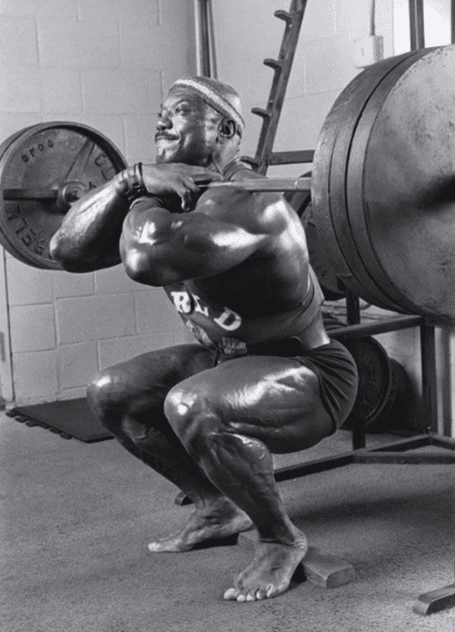Yes, but this is probably due to a simple reason… less joint stress!

Does pressing work the lateral & medial triceps better than pure elbow extension?
Do squats hit the vasti best versus leg extensions?
Do pull-ups work the brachialis more effectively than curls?
Single-Joint Exercises for Multi-Joint Muscles
Bodybuilders have long realized that multi-joint muscles need single-joint exercises to grow best, so interchanging within the question being asked here.
This means you need arm extensions for the long head of the triceps, sissy squats or leg extensions for the rectus femoris, hip extensions with fixed knee angles or leg curls for most of the hamstrings and curls for the biceps.
Otherwise, multi-jointers are not anchored, failing to change length much so not exerting significant tension for optimal growth. You need either pure movement or countercurrency.
Research stating that compound exercises are equal in hypertrophy to programs with isolation movements don’t appear as rigorous, long-lasting, or focused on specific muscles like this showing more elbow flexor hypertrophy. This isn’t surprising though…
Multi-Joint Exercises for Single-Joint Muscles?
On single-joint muscles needing multi-joint exercises to grow best, most would say “no” or perhaps something asinine like “only as part of a bodybuilding program with plenty of variety.”
Why should we expect more lateral & medial head triceps growth from a bench press, which many associate with chest development, compared to a cable push-down?
However, there’s research showing that single-joint muscles, especially those within the limbs, do grow more from multi-joint exercises (with concurrency).
This paper demonstrates squats growing the vasti better than leg extensions, this study had greater cross-sectional area when bench pressing for the lateral triceps head, and this one for leg press over leg extension.
Based on the science and my own training experience, this may derive from a rather simple truth… multi-joint exercises cause less joint stress!
Barring extreme ranges of motion, compound exercises feel tough on the muscles, not the joints. They emphasize compression over shearing forces because you move linearly instead of rotationally. This may result in greater excitation of the high-threshold motor units.
Though single-joint exercises may therefore be inferior, they still grow multi-joint muscles best since they expose them to the most tension possible.
This seems especially relevant for extension at the elbows & knees. Anyone who has done skull crushers with a decent weight understands the incredible elbow pain you can endure, sometimes preventing advanced trainees from doing them at all.
(A good compromise here is to reduce the stretch by keeping your elbows at your sides.)
Studies have shown regional hypertrophy from different exercises. However, I believe this is due to passive tension adding sarcomeres in-series, not different motor units or parts along the muscle fiber length activating separately.
This is confounding, as some exercises have more of a stretch like deep squats versus leg extensions. This passive tension also reduces active tension for the same given resistance, which means lower EMG activity, making it seem less effective for a muscle.
For large muscles like the pecs, a bench press is a better option versus a dumbbell fly anyway. It’s not just horizontal adduction without the triceps.
Longitudinal growth from stretch is limited compared to fiber diameter (while active tension may be compromised from stretching too far) and riskier on the shoulders.
Movements like kickbacks likely aren’t the best mass builders for large muscles like the glutes anyway. They have awkward execution and unusual strength curves. Their high EMG activity come from including less overall muscle, not being inherently better than compound exercises.
Finally, it makes sense aesthetically for single-joint muscles to be developed more than multi-joint muscles. Functionally, the body evolved to have single-joint muscles generate power and multi-joint muscles transfer it.
An overdeveloped rectus femoris would look odd placed within skinny thighs, or biceps without much brachialis would lack thickness. While these imbalances are unlikely to happen, overemphasizing single-joint exercises may allow for this depending on your genes.
Working Single-Joint Muscles Best
I’d suggest including a push, a pull, and a squat in most weekly routines.
These are basic, accessible movements that work the large muscles well anyway, and you may trigger more growth in the single-joint muscles in the limbs too.
So, for example, include bench presses, pull-ups & squats. Horizontal or vertical, it doesn’t matter for the upper body. Other pushes could be an overhead press or dip, with other pulls like rows. Another squat-like exercise is the leg press, which gives a break from axial loading if needed.
I’d suggest pairing a compound with an isolation for the same muscles. This allows pre-exhaustion, so less weight to stimulate growth, while preparing the joints more safely. So you could follow squats with leg extensions and bench pressing with triceps extensions.
Finally, I’d adopt medium or slightly wide positions. While close-grip pressing, for example, is easier on the elbows than arm extensions, the advantages of compound exercises fade as you move toward any extreme. You also want to ensure the large muscles are worked best.
Personally, I feel my whole quads working on leg extensions or sissy squats. Each triceps head gets pumped on arm extensions. I’ve contemplated at times if I needed compound movements whatsoever!
However, I’ve definitely felt joint stress on isolations that harmed performance, and I eventually settled on keeping the classic big movements indefinitely.
Most disappointed with their bodybuilding progress, among those who train regularly, gravitate toward extremes. You have so little volume, do all isolation movements, or focus on a single macronutrient. This affected me deeply in the past.
The great compounds have earned their place in vaunted bodybuilding lore for good reason… ignore them for single-joint muscle growth, and other benefits, at your own peril!
